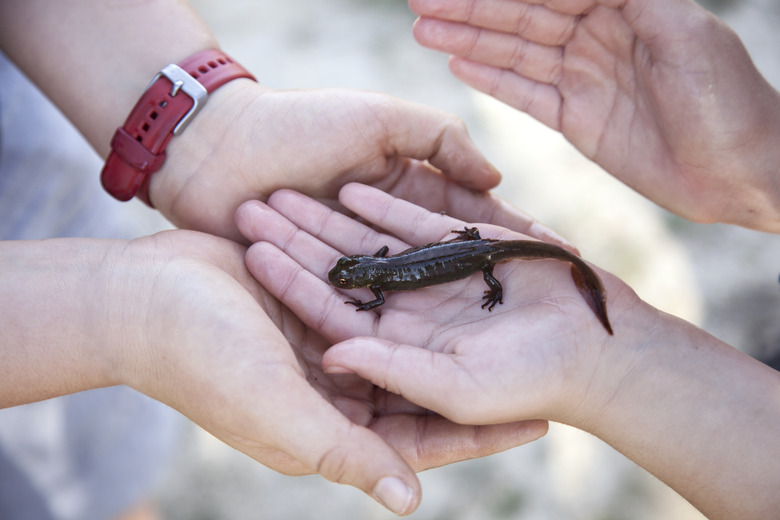Facts On Newts For Kids
Newts – are they lizards? Are they frogs? Some strange mixture of the two? Though newts look like some type of interesting hybrid animal, these creatures are amphibians in the Salamandridae family. Newts have four legs and differ from frogs in that they have a tail as an adult.
Newt vs. Salamander: What's the Difference?
Newt vs. Salamander: What's the Difference?
Perhaps one of the most basic facts about newts is how to tell the difference between a newt and a salamander. Many different salamander types or species exist. All newts are salamanders, as scientists classify them in the Salamandridae family. However, not all salamanders are newts!
Though different species can break some of these rules, in general a few characteristics can help you differentiate between newts and salamanders. Most newts spend the majority of their time on land rather than in the water. Conversely, "traditional" salamanders spend most of their time in the water and little time on land.
The other characteristic that generally helps you differentiate between newts and salamanders is their skin. Like frogs, "true" salamanders have slick, wet skin with few bumps. However, newts generally have thicker, drier skin than salamanders to match their more terrestrial lifestyle. Many newts also have a warty or bumpy texture to their skin as well.
Species Highlight: The Great Crested Newt
Species Highlight: The Great Crested Newt
The great crested newt is one of the most unique-looking European newt species and features a dramatic crest along its back. This crest, which has a jagged appearance and might remind you of something you'd see illustrated along the back of a dragon in a storybook, grows only on the males of the species.
Male great crested newts grow that showy crest along their back and tail during the breeding season to catch the attention of the female.
Species Highlight: The Luristan Newt
Species Highlight: The Luristan Newt
The Luristan newt is one of the rarest newt species on the planet. Classified as "critically endangered," this species lives only in the Luristan province in Iran. Drought, habitat loss and dams of the few streams this species still inhabits all threaten its continued survival.
A European captive-breeding program, supported by the efforts of zoos, private breeders and universities, is working to help bolster the numbers of this critically endangered species.
Species Highlight: Rough-Skinned Newt
Species Highlight: Rough-Skinned Newt
The rough-skinned newt lives in the western United States and is one of the more poisonous salamander species. This species, which has bumpy skin as its name suggests, uses a deadly toxin to protect itself from predators. However, recent research has shown that the protective toxin isn't actually produced by the newt at all.
The tetrodotoxin on the newt's skin, a neurotoxin also found in the blue-ringed octopus and pufferfish, actually comes from a bacteria on their skin rather than the newt itself. The toxin can cause paralysis or death in high concentrations. Unfortunately for the newts, some of their primary predators – garter snakes – are actually developing resistance to the toxin.
Fun Facts About Newts
Fun Facts About Newts
Some of the most interesting facts about newts include:
- Newts can re-grow or regenerate body parts, such as tails, legs and even organs. Regenerative ability decreases as the animal ages.
- Like most amphibians, newts can breathe underwater through their skin.
- Most species have some type of poison on their skin to protect them from predators.
- Newts are carnivores and feed on worms, slugs, snails and other prey.
- The ribbed newt has an incredibly sharp ribcage and can squeeze the tips of its ribs through its skin if captured by a predator, stabbing the offending creature and escaping.
- Many newt species will seasonally dig underground and enter a hibernationlike state known as torpor.
Cite This Article
MLA
Zinni, Yasmin. "Facts On Newts For Kids" sciencing.com, https://www.sciencing.com/newts-kids-8593965/. 1 December 2021.
APA
Zinni, Yasmin. (2021, December 1). Facts On Newts For Kids. sciencing.com. Retrieved from https://www.sciencing.com/newts-kids-8593965/
Chicago
Zinni, Yasmin. Facts On Newts For Kids last modified March 24, 2022. https://www.sciencing.com/newts-kids-8593965/
